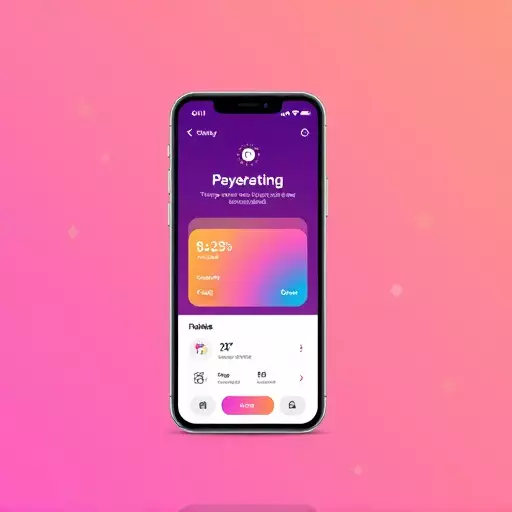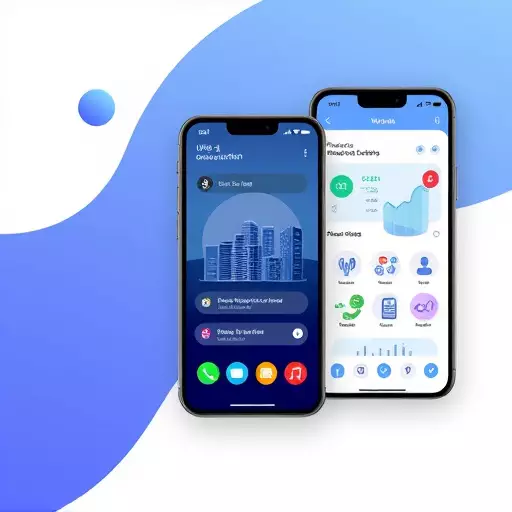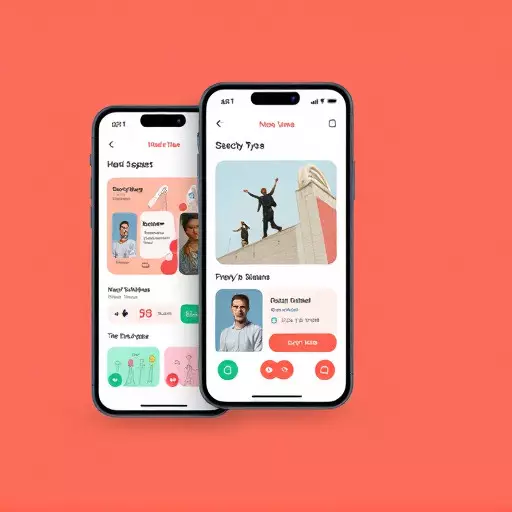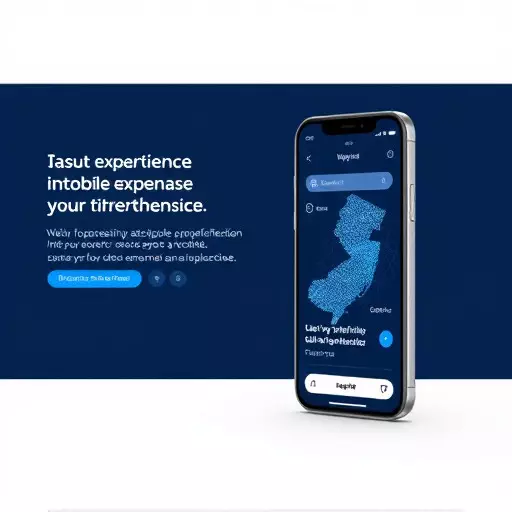Voice interface design is revolutionizing user interactions with technology, particularly through digital assistants like Siri, Alexa, and Google Assistant. For mobile app designers in New Jersey, understanding this field is crucial for creating engaging experiences. Key aspects include balancing natural language processing, intuitive command structures, and seamless interaction while addressing challenges like spoken language recognition and context understanding. By focusing on these areas, designers can craft apps that facilitate natural conversations, enhancing user satisfaction and engagement. Effective voice navigation prioritizes simplicity, clarity, and accessibility for diverse users, with best practices involving NLP, intuitive interactions, and inclusive design. Measuring success involves task completion rates, user satisfaction scores, and qualitative feedback to refine interaction models and align with user expectations.
Voice interface design is transforming the way we interact with technology, offering a new frontier in user experience (UX) and user interface (UI) design. As voice assistants gain popularity, their impact on mobile app design is undeniable. This article explores the evolving landscape of voice interface design, focusing on key considerations for creating intuitive and accessible navigation in New Jersey’s tech-driven market. We’ll delve into best practices for developing Voice User Interfaces (VUIs), and measure success through evaluation methods tailored to this innovative design approach.
- Understanding Voice Interface Design: A New Frontier in UX/UI
- The Rise of Voice Assistants and Their Impact on Mobile App Design
- User Experience Design Considerations for Voice Interfaces in New Jersey
- Creating Intuitive and Accessible Voice Navigation for Apps
- Best Practices for Developing Voice User Interfaces (VUI)
- Measuring Success: Evaluating the Effectiveness of Voice Interface Design
Understanding Voice Interface Design: A New Frontier in UX/UI

Voice interface design is a burgeoning field within user experience (UX) and user interface (UI) design, marking a significant shift in how users interact with technology. As digital assistants like Siri, Alexa, and Google Assistant become omnipresent, understanding voice interactions has become crucial for mobile app UX/UI designers in New Jersey and beyond. This new frontier requires a thoughtful balance between natural language processing, intuitive command structures, and seamless user experiences.
Designers must adapt to the unique challenges of voice interfaces, such as ensuring clarity in spoken language recognition, designing for context and nuance in user commands, and mitigating privacy concerns related to audio data collection. By focusing on these aspects, they can create mobile apps that not only respond to vocal inputs but also foster a sense of natural conversation, enhancing user satisfaction and engagement in the process.
The Rise of Voice Assistants and Their Impact on Mobile App Design

The proliferation of voice assistants like Siri, Alexa, and Google Assistant has marked a significant shift in how users interact with technology. As these intelligent virtual assistants become increasingly integrated into our daily lives, they are reshaping the landscape of mobile app design in New Jersey and beyond. User experience (UX) designers and interface (UI) developers must adapt to this new reality, focusing on creating interfaces that seamlessly blend auditory interactions with traditional visual ones. This evolution demands a holistic approach to mobile app UX/UI design, ensuring voice assistants become intuitive extensions of the user’s digital experiences rather than separate functionalities.
This shift has profound implications for app designers. With voice commands handling many tasks, the visual interface needs to be optimized for quick, efficient interactions. This involves simplifying navigation, using conversational language in interfaces, and designing for context-aware responses. By prioritizing intuitive voice control and a clean, uncluttered UI, developers can enhance user satisfaction and foster a more engaging relationship between users and their apps, driving innovation in the mobile app UX/UI design space.
User Experience Design Considerations for Voice Interfaces in New Jersey

Designing voice interfaces for user experience (UX) in New Jersey requires a careful balance between accessibility and intuitiveness. As voice assistants become increasingly integrated into daily life, ensuring that mobile app UX/UI designs cater to diverse user needs is paramount. Developers must consider factors such as natural language processing accuracy, context awareness, and the ability to handle a wide range of user commands.
New Jersey’s diverse population necessitates inclusive design practices. Voice interfaces should be easy to use for individuals with visual impairments or those who prefer hands-free interaction. Incorporating feedback mechanisms and allowing users to customize voice settings enhance overall UX. Additionally, designing for context ensures that voice assistants provide relevant responses, making interactions more efficient and enjoyable for users across the state.
Creating Intuitive and Accessible Voice Navigation for Apps

Creating intuitive and accessible voice navigation for apps is a key aspect of modern user experience (UX) design, especially in the mobile app realm. Voice interface design leverages natural language processing (NLP) to enable users to interact with apps hands-free, making it ideal for scenarios where visual focus is limited or when users prefer a quicker, more seamless experience. By integrating voice navigation, New Jersey-based UI/UX designers can enhance accessibility, cater to users with diverse abilities, and ultimately improve overall user satisfaction.
Effective voice navigation should be designed with simplicity and clarity in mind. Developers must ensure that the system understands a wide range of user utterances, provides relevant responses, and offers intuitive control over app functionality. Mobile app UX/UI design best practices dictate that voice interactions should be consistent across different features and contexts, using natural language that aligns with common user expectations. This includes providing clear feedback during voice commands, offering options for clarification or repetition if needed, and ensuring the system adapts to various user accents and dialects.
Best Practices for Developing Voice User Interfaces (VUI)

Developing Voice User Interfaces (VUI) requires a thoughtful approach to ensure an exceptional user experience, especially in the competitive mobile app UX/UI design landscape in New Jersey and beyond. Best practices for VUI focus on natural language processing and voice interaction that feels intuitive and seamless. Start by understanding user needs and designing conversations that flow logically, mimicking real-life interactions. This involves defining clear use cases and identifying common user tasks to structure the dialog effectively.
Visualize the conversation flow with user journey maps, ensuring a smooth transition between prompts and responses. Keep commands concise and avoid jargon to make voice interactions accessible. Test extensively with diverse voices and languages to ensure inclusivity. Regularly gather user feedback to refine the VUI, making it more responsive and accurate over time. By adhering to these practices, designers can create engaging mobile app experiences that leverage voice technology.
Measuring Success: Evaluating the Effectiveness of Voice Interface Design

Measuring success in voice interface design is a multifaceted endeavor that goes beyond simple functionality. It involves evaluating how well the interface enhances user experience (UX) design, particularly within the context of mobile app UX/UI design in New Jersey and beyond. Metrics such as task completion rates, user satisfaction scores, and net promoter scores can provide valuable insights into the effectiveness of voice interactions.
User feedback plays a crucial role in gauging success. Gathering qualitative data through surveys, interviews, or usability testing sessions helps uncover nuances in how users interact with voice interfaces. By analyzing this feedback, designers can identify areas for improvement, refine interaction models, and ensure the voice interface aligns with user expectations and preferences, ultimately contributing to superior mobile app UX/UI design outcomes.


